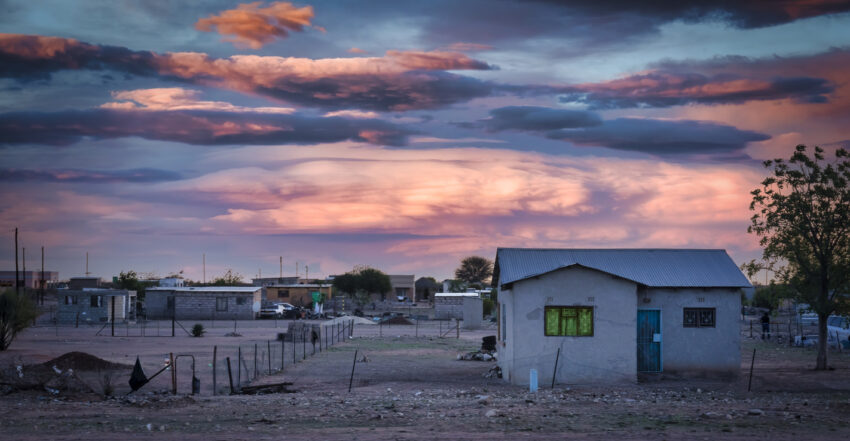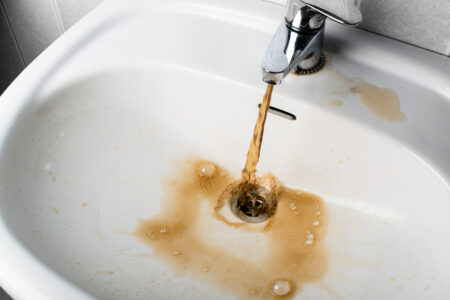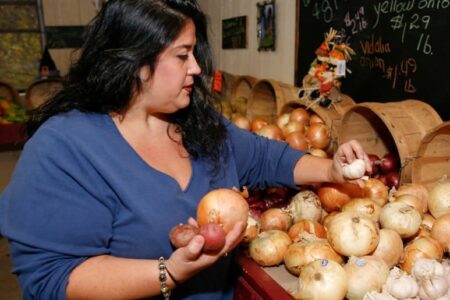
Share On Social!
As the average American takes a shower, cooks, or enjoys a drink from the tap, chances are they simply turn on a faucet to access clean, drinkable water.
People who live in colonias have a much harsher experience.
While the average American uses 88 gallons of water per day, Cochran colonia residents in El Paso County, Texas, use a mere 50 to 100 gallons per month, facing daily struggles for safe water.
Join us as Salud America! explores this rising health disparity through a three-part series on Latino drinking water contamination.
Part 1 focused on nitrates, how prevalent they are in Latino drinking water, and emerging efforts to promote safer water for Latinos and all people.
Part 2 addressed drinking water contamination at Superfund sites, its impact on Latinos, and current efforts to promote safer drinking water in these areas.
Today, in Part 3, we will explore water insecurity in colonias and the US/Mexico border, and how we can address this health inequity.
What Are Colonias and How Did They Arise?
Colonias are predominantly Latino, unincorporated, and impoverished areas throughout the US, such as Arizona, New Mexico, and California.
Texas has the largest colonia population, particularly along the Texas-Mexico border.
These poverty-stricken areas can consist of makeshift shacks or trailers that lack streets and basic public services, such as clean, safe drinking water.
Colonias developed in the mid-20th century because of a need for low-cost laborers in agriculture and factories along the Texas-Mexico border. These opportunities attracted Latino workers from both the US and Mexico.
However, wages were not sufficient for workers to afford to live in nearby towns or cities, so they created makeshift settlements. At one time, these workers may have been promised access to water utilities and other infrastructure, but many colonias still lack basic human needs that the average American takes for granted, such as water security.
Water Insecurity in Colonias
Texas Water Resources Institute (TWRI) at Texas A&M University defines water security as access to affordable, sufficient, and readily available water that is safe to drink.
Various socioeconomic factors make it challenging for colonia residents to obtain water security, including limited budgets, poor education, language barriers, and immigration status.
Discrimination against colonia residents also makes obtaining water security difficult.
This discrimination often results in colonias remaining unincorporated by neighboring cities, which could help provide water system services. Colonias are also underrepresented in water security research in the US, resulting in limited help from federal and state governments.
“Barriers to water security fall along similar lines as barriers to other resources,” said Dr. Wendy Jepson, TWRI associate director, in a report from TWRI. “Wherever you have more precarious populations, there’s likely to be water insecurity.”
Water Contamination in Colonias
In some cases, colonias have managed to a connect to a water system.
But this does not guarantee water security. Poor infrastructure due to lack of funding to maintain the water system can contaminate water supplies.
For example, residents of the Tornillo colonia in El Paso County, Texas, once got their water from their own water treatment plant.
However, the colonia could not afford to maintain the water system, which resulted in arsenic and E.coli contamination, according to a Texas Standard article.
Now, the water is unsafe to drink.
Thus, colonias that do happen to have a water connection are still in danger of exposure to contaminated drinking water, which, depending on the contaminants, can cause cancer, thyroid disease, or liver, kidney, and reproductive system issues.
Some colonia residents depend on well water, but it likely that this water is also unsafe to drink.
Due to the expense, lack of resources, and the messy legal process to build wells in colonias, some wells are not built to permit or inspected by officials to ensure water quality.
For example, according to the El Paso Times, some residents in the Laura E. Mundy colonia near El Paso, Texas, drank the local well water for years before being diagnosed with H. pylori, a cancer-causing waterborne infection.
Due to the challenges of clean water access, many colonia residents pay a high cost for trucked-in water (up to $100 or more per month).
However, this water is often stored in large tanks adjacent to homes for days or weeks before use, increasing the chance for waterborne diseases since disinfectant in the water begins to degrade within hours.
“In addition, water stored in these tanks can be prone to environmental contamination from dust or rainwater or improper maintenance,” according to a report by Dr. Ivonne Santiago of the University of Texas El Paso.
Reliance on Bottled Water in Colonias
Perhaps the most reliable source for safe drinking water in colonias is bottled water, which is still an expensive option considering the limited income of colonia residents.
Maintaining a supply of bottled water for basic living necessities is a source of stress, requiring more than just frequent trips to the store. It also may involve transportation arrangements and time off from work, leading to lost wages.
Any form of water insecurity is harmful to one’s physical health, from an increased risk of disease to dehydration. But there is also a mental health component.
Families living in colonias suffering from water insecurity are forced to make difficult sacrifices every day, such as choosing whether to bathe their child or have enough drinking water for the following day.
“If people’s water is unsafe or unreliable, they have this constant fear, this thing they’re thinking about all the time that they really shouldn’t have to think about. Over and over again I hear people saying they’re worried about their families,” said Dr. Garett Sansom, a research assistant professor at Texas A&M University, in a TWRI article.
Promoting Water Security in Colonias
Many Latino heroes are taking action for water security.
A report produced by the Carnegie-Knight News21 program highlights some of these heroes.
Sergio Carranza, executive director of the nonprofit Pueblo Unido Community Development Corp., has engineered a cost-effective filtration system for colonias in California’s eastern Coachella Valley.

In the Horizon View Estates colonia near El Paso, Cristina Morales teamed with Arturo Padilla to install a sewage system. Her efforts included organizing a petition and showing officials brown water from her tap, sewage pooling in a backyard, a bathtub full of sewage water, and sewage coming from a kitchen sink. She advocated for water security at a utility meeting with Padilla and stood her ground when she was nearly turned away because she spoke limited English.
In San Elizario, Texas, Olivia Figueroa has also advocated for change in her colonia. She is the executive director of Adults and Youth United Development Association Inc. (AYUDA), a non-profit that works to remove barriers to water access, quality housing, and health services for residents of the El Paso County colonias.
Since the founding of AYUDA, she has helped most of the colonias in San Elizario gain access to tap water, sewage, paved roads, and electricity.
Coming Together to Make a Change
Despite these heroic efforts, and evolving legislative changes, Dr. Jepson explained in a TWRI article that sustainable water security in colonias will only happen when the US believes that water security is a human right.
“Until, and only until, we are able as a community, as a society, as a state, to commit to a human right to water security and have that inform subsequent policy, technical interventions are simply band-aids, and we’re not going to solve the fundamental issues,” she said.
Jepson added that because water security in colonias is a multifaceted problem, multidisciplinary teams are necessary to tackle this issue. Teams may consist of:
- Colonia community members
- Engineers
- Finance professionals
- Community involvement and empowerment advocates
You can also play a role in advocating for local systemic change.
Select your county and get a Health Equity Report Card by Salud America! at UT Health San Antonio. In your report card, you will see maps, data, and gauges to compare health equity issues, including environmental concerns, to the rest of your state and nation.
You can email your Health Equity Report Card to local leaders to stimulate community change. Use the data in your materials or share on social media to raise awareness.
By The Numbers
74
percent
of Latino kids have had a sugary drink by age 2 (vs. 45% of white kids)



